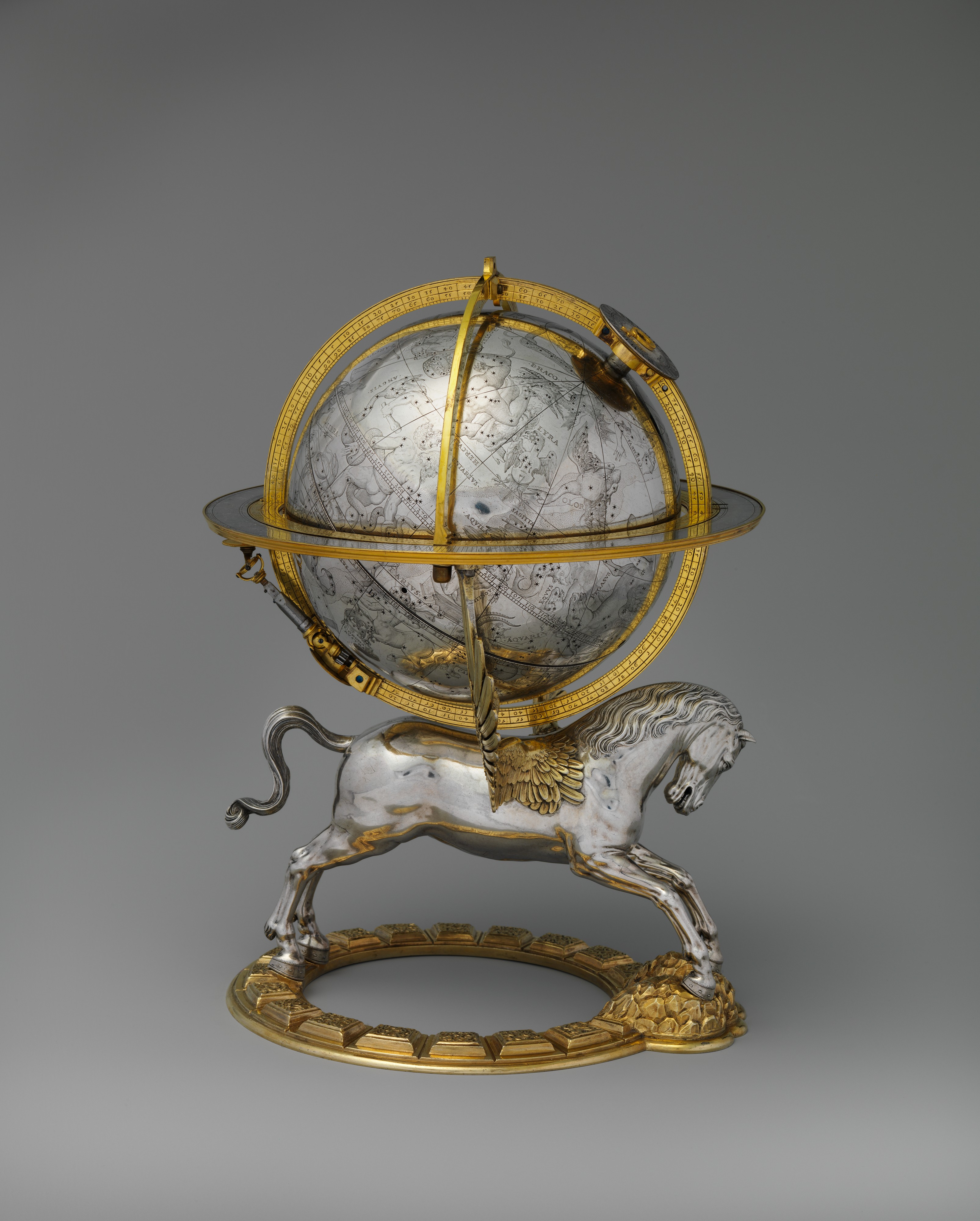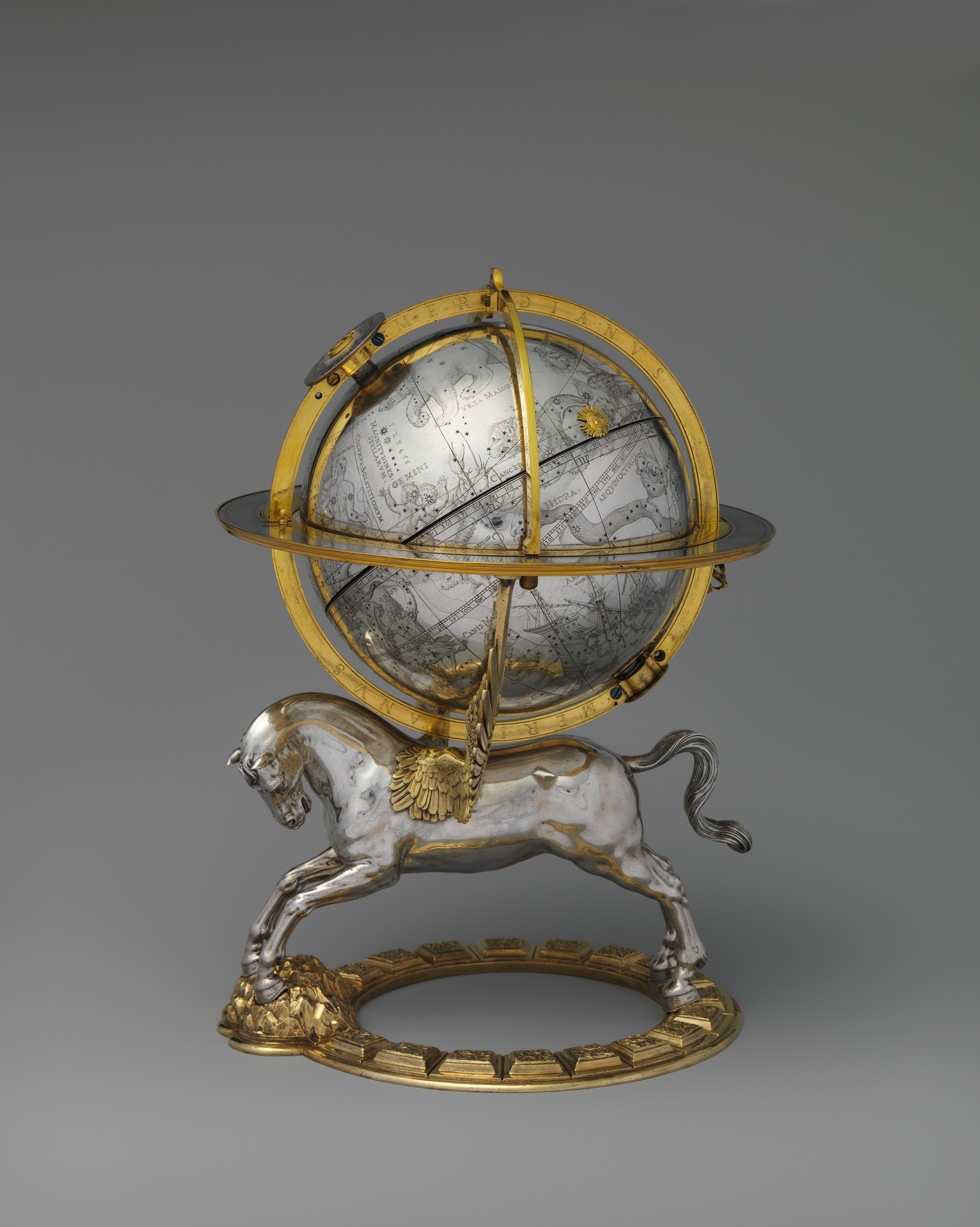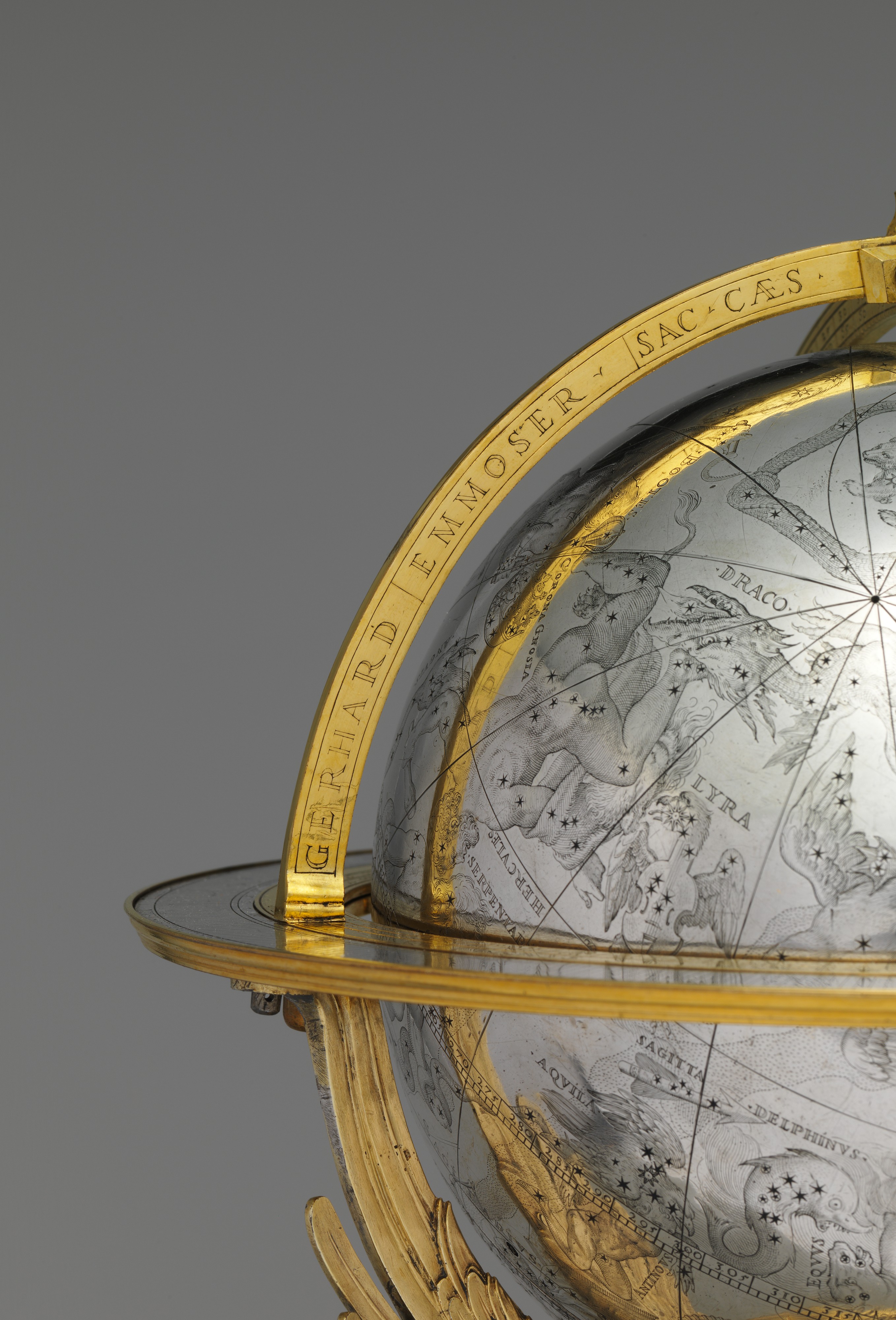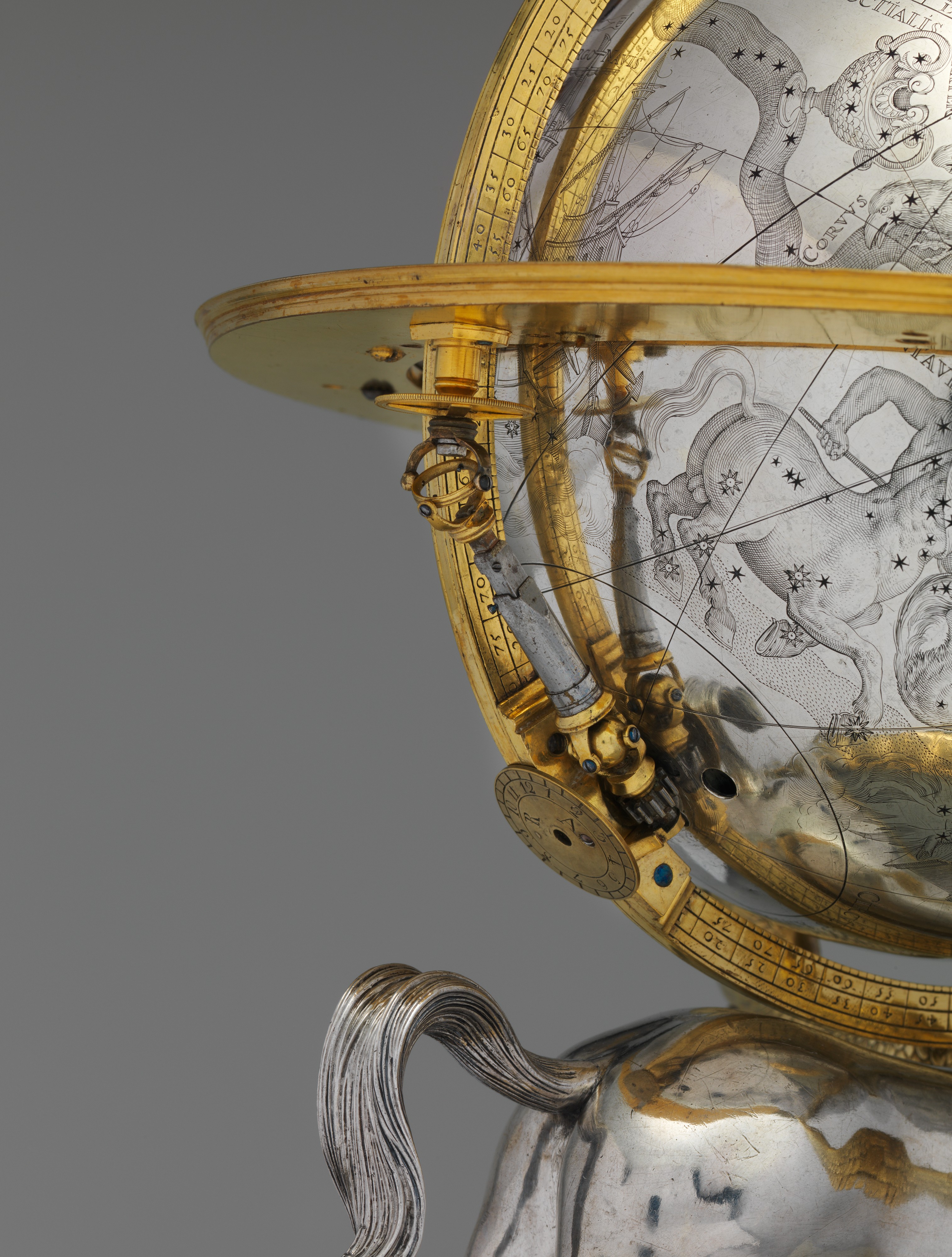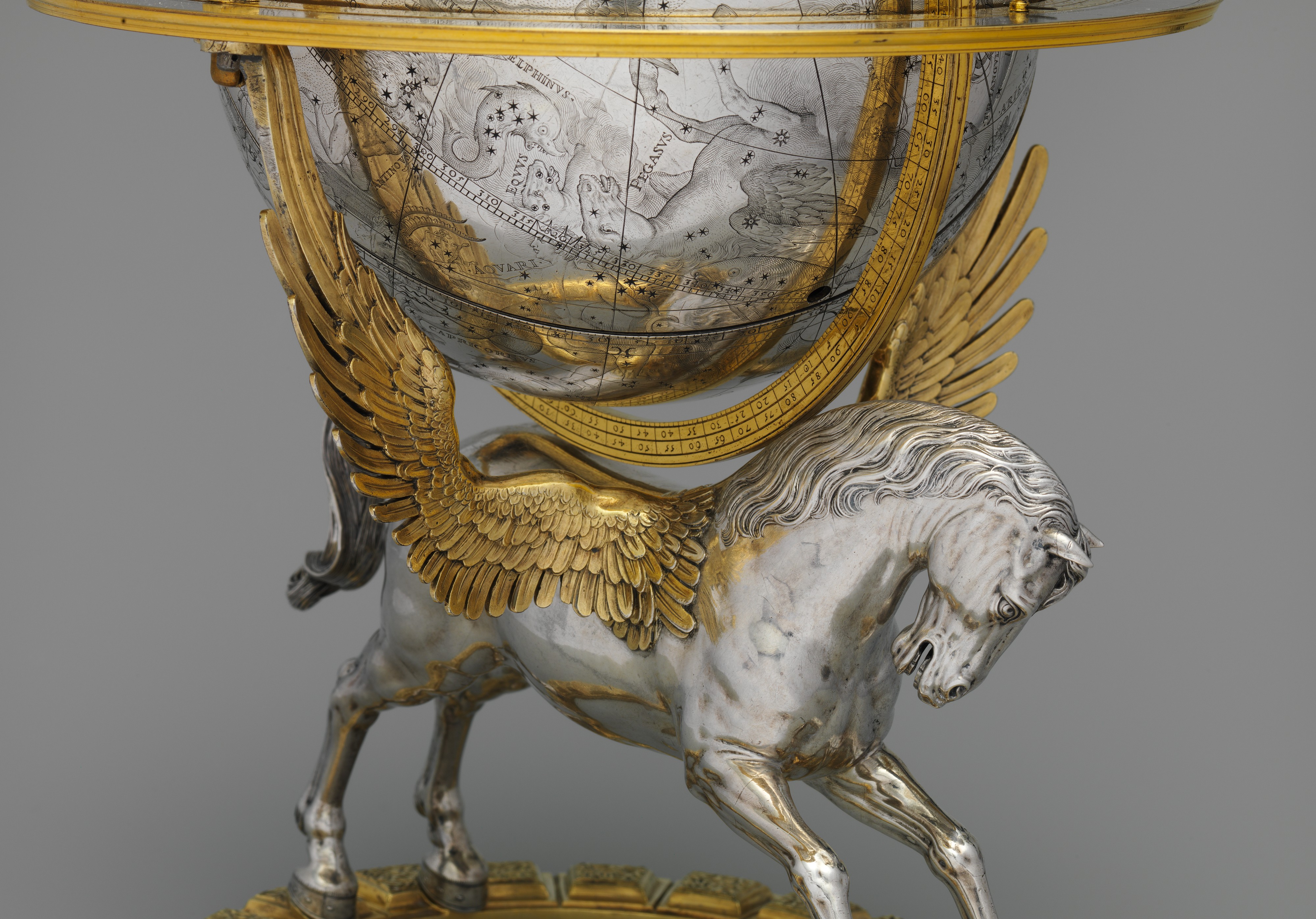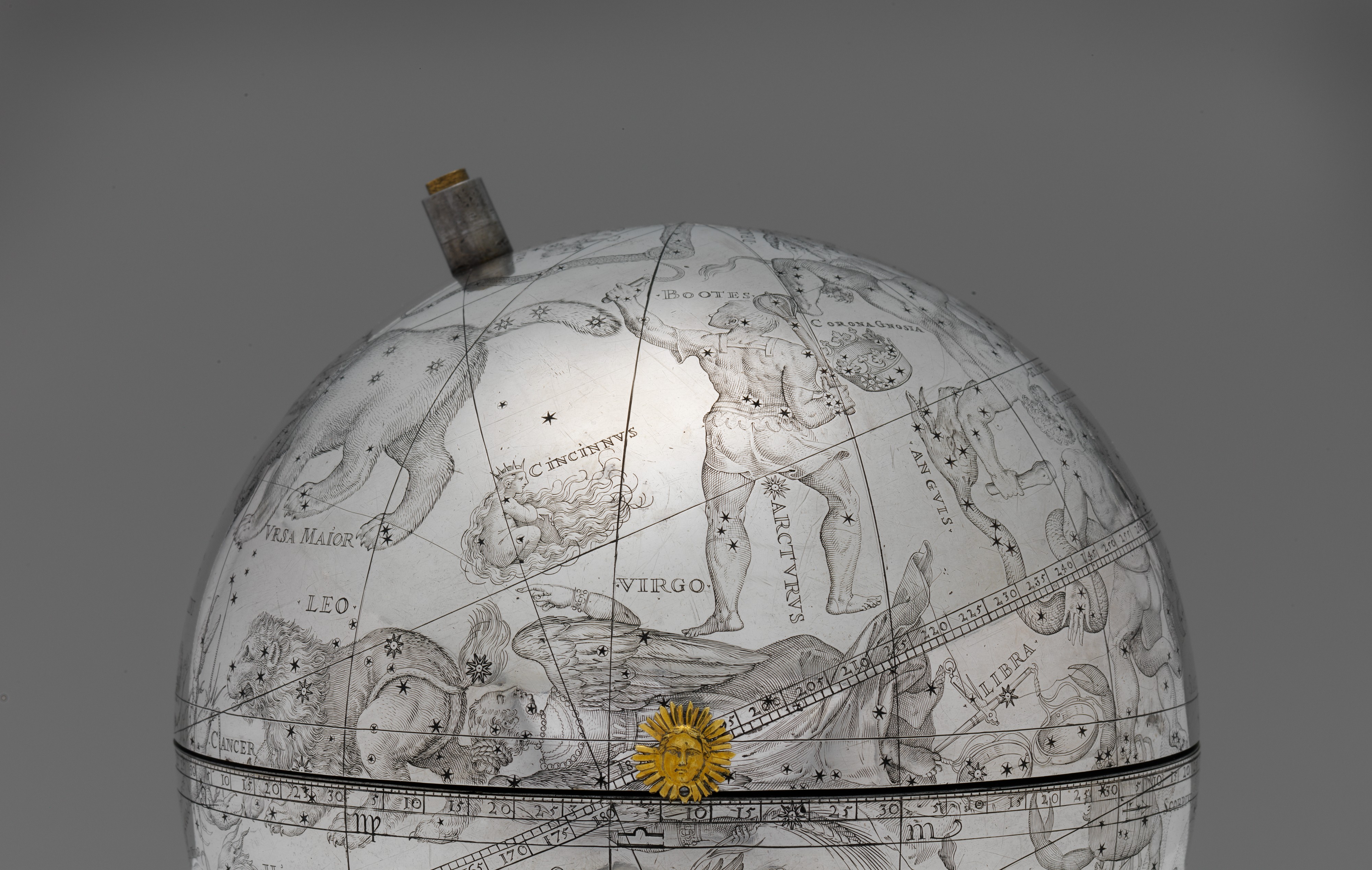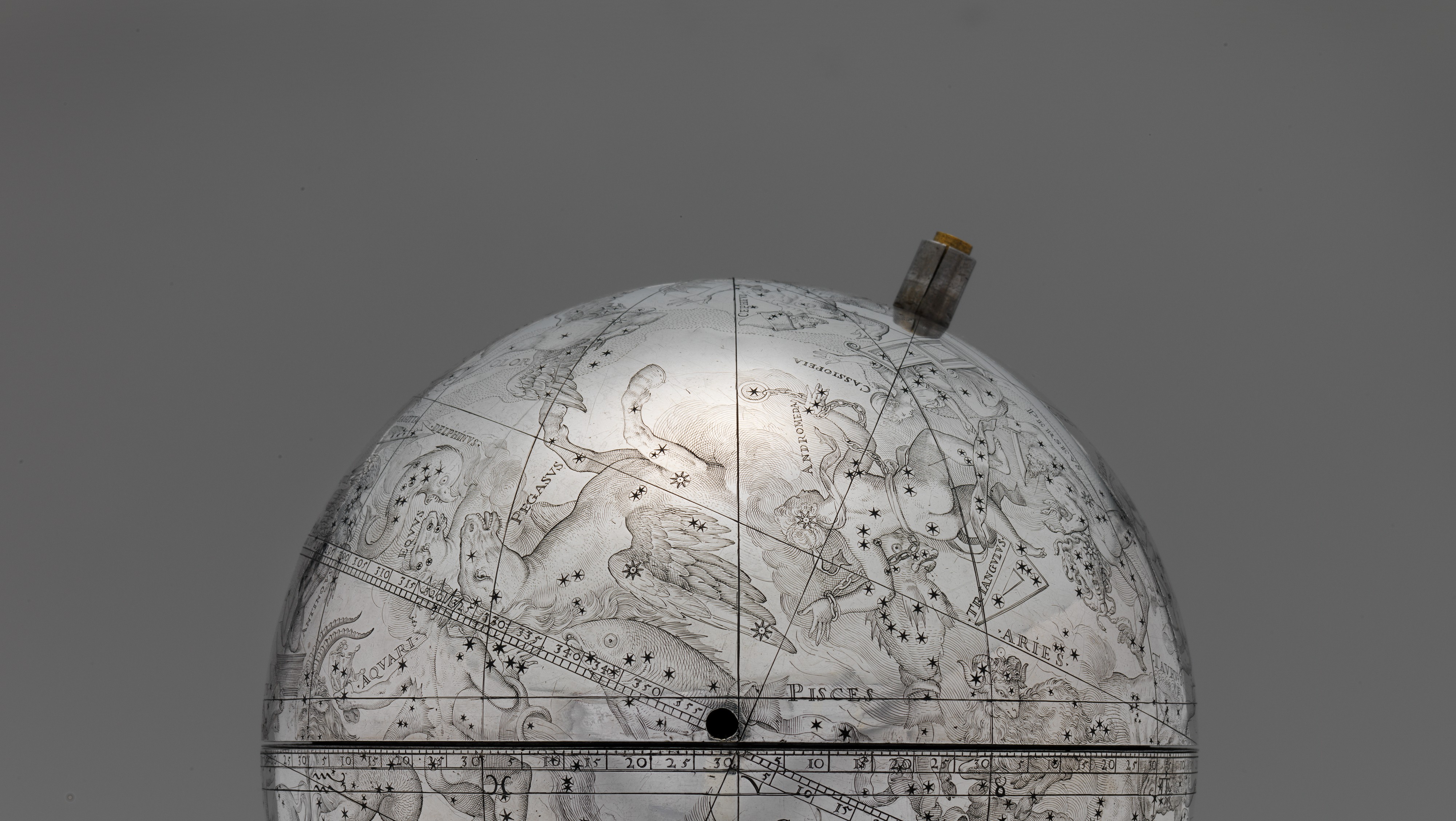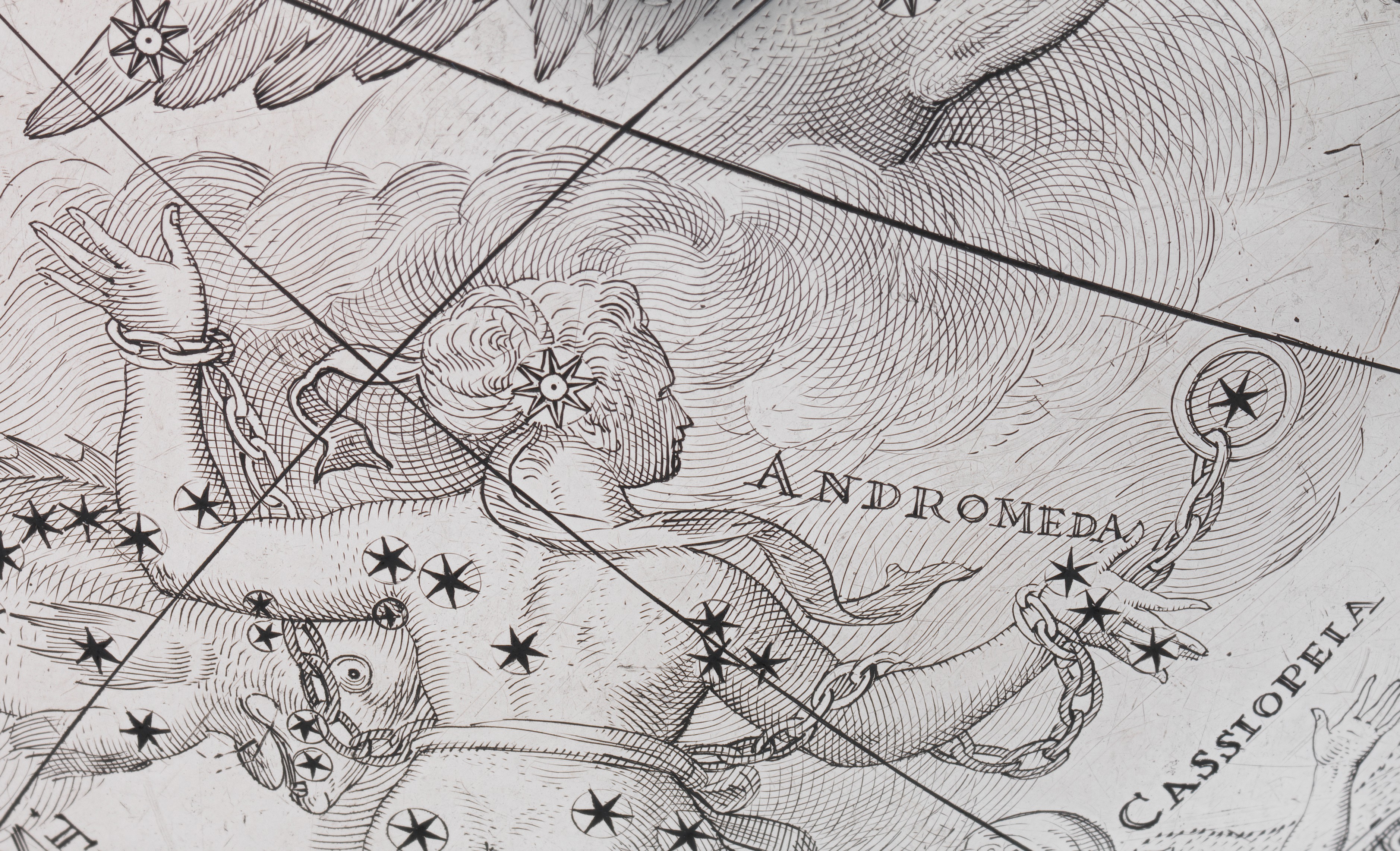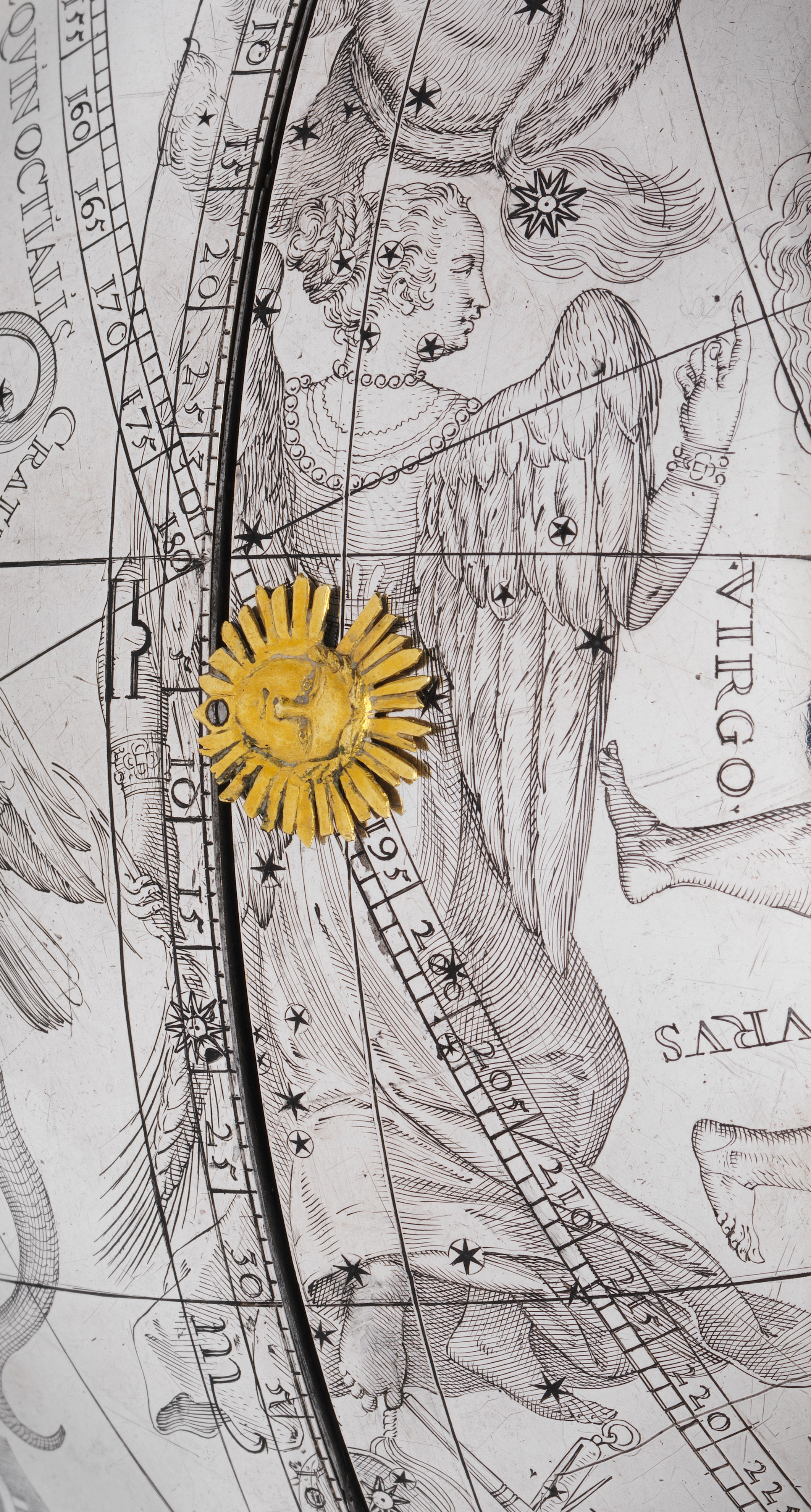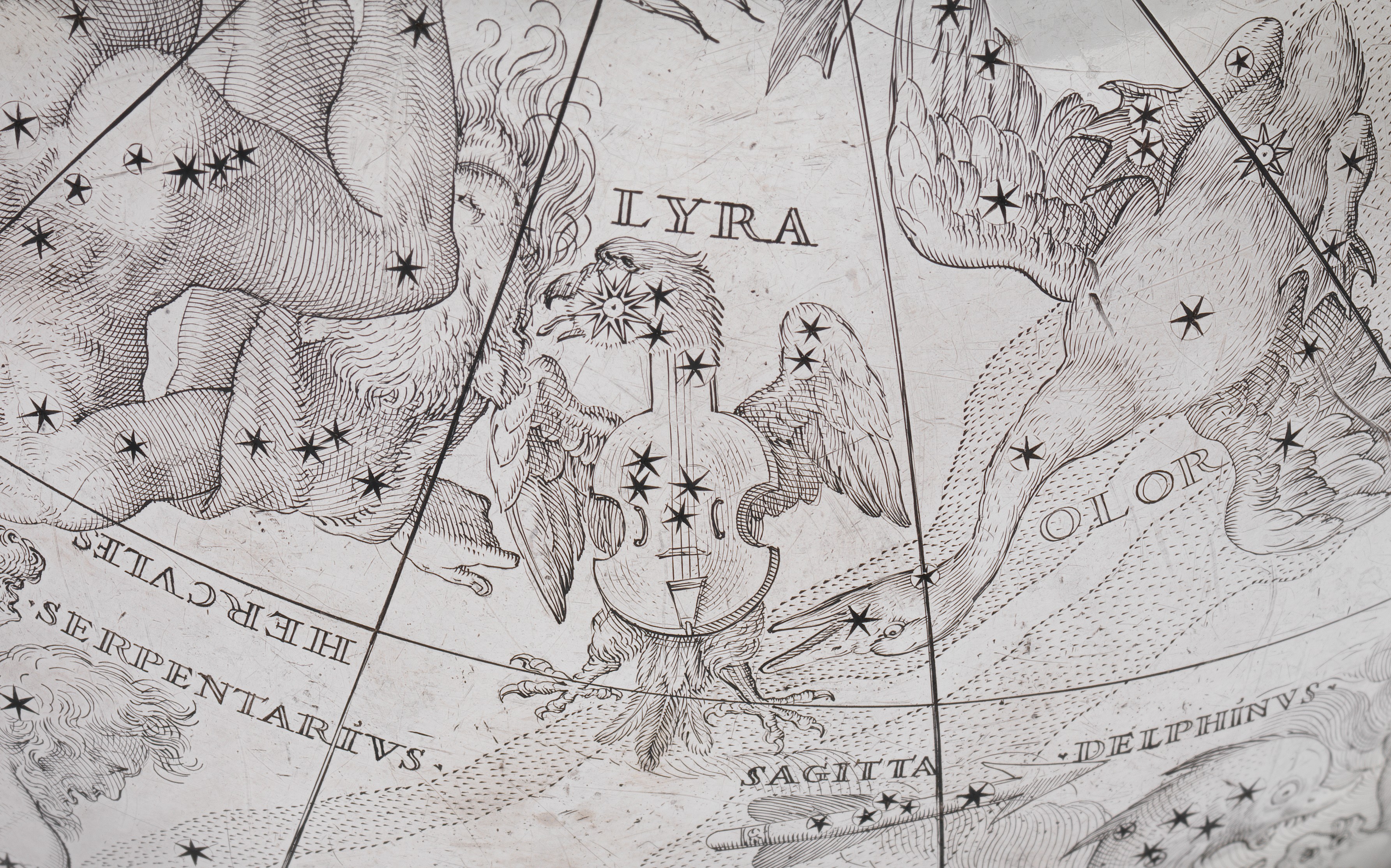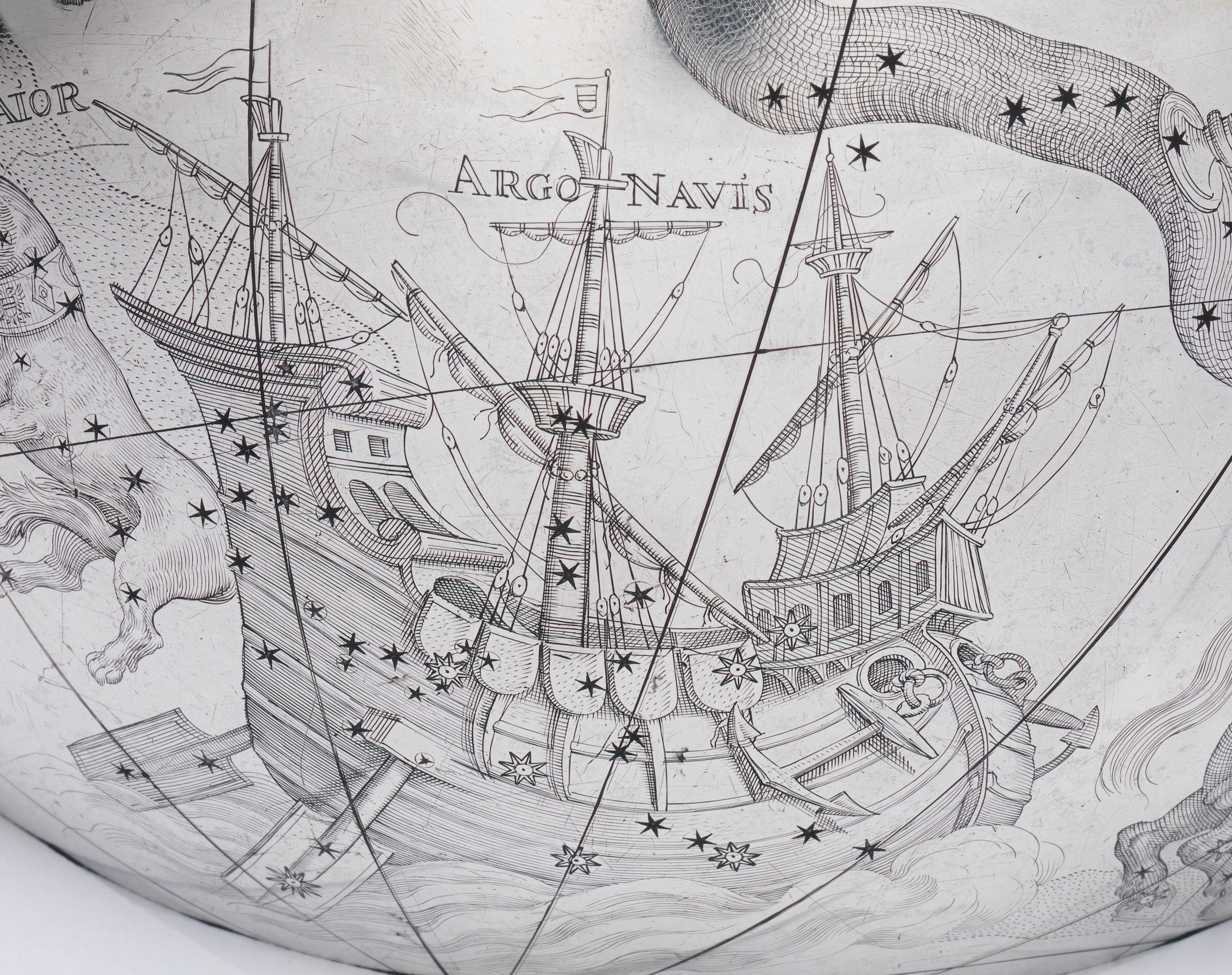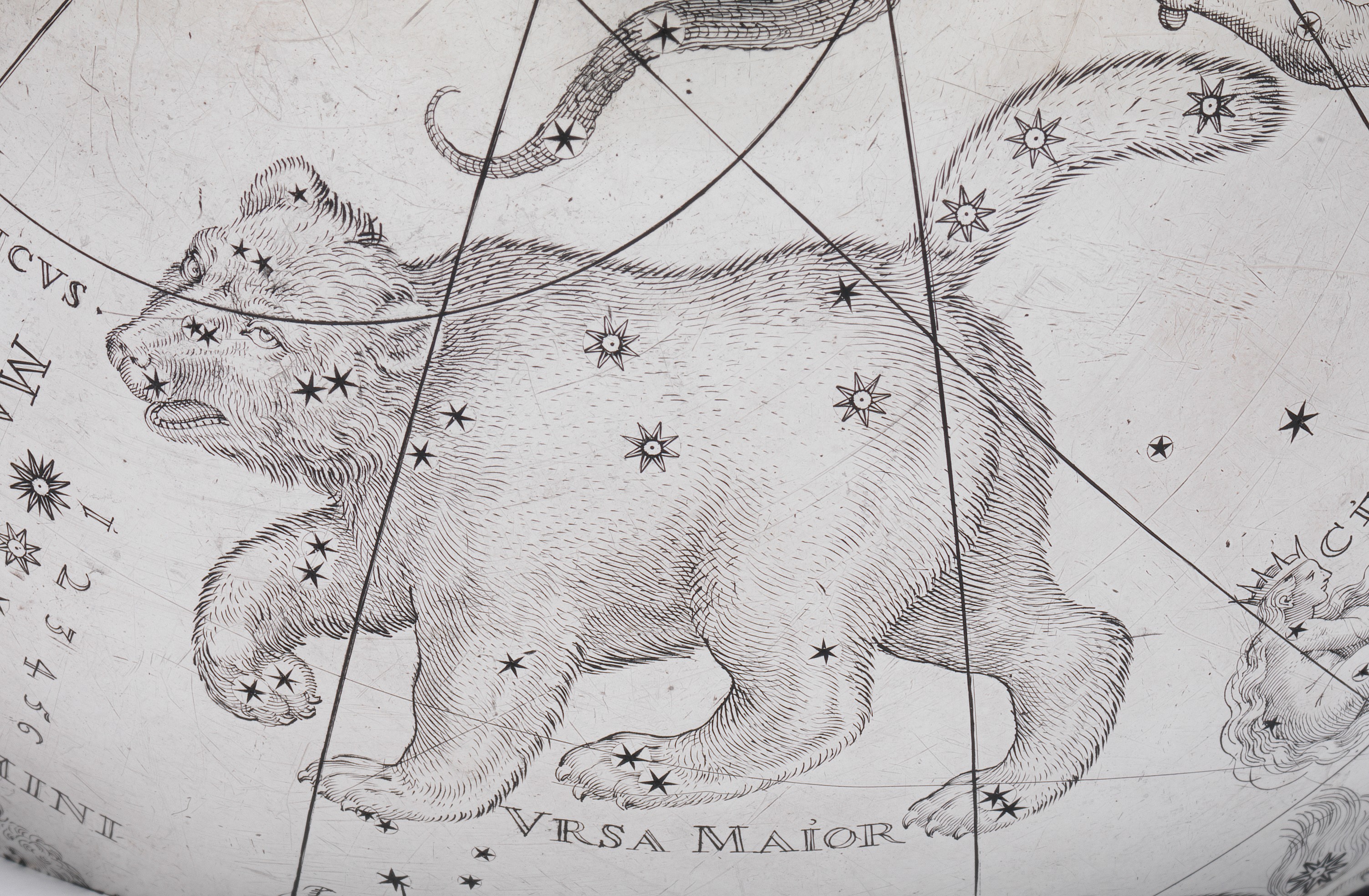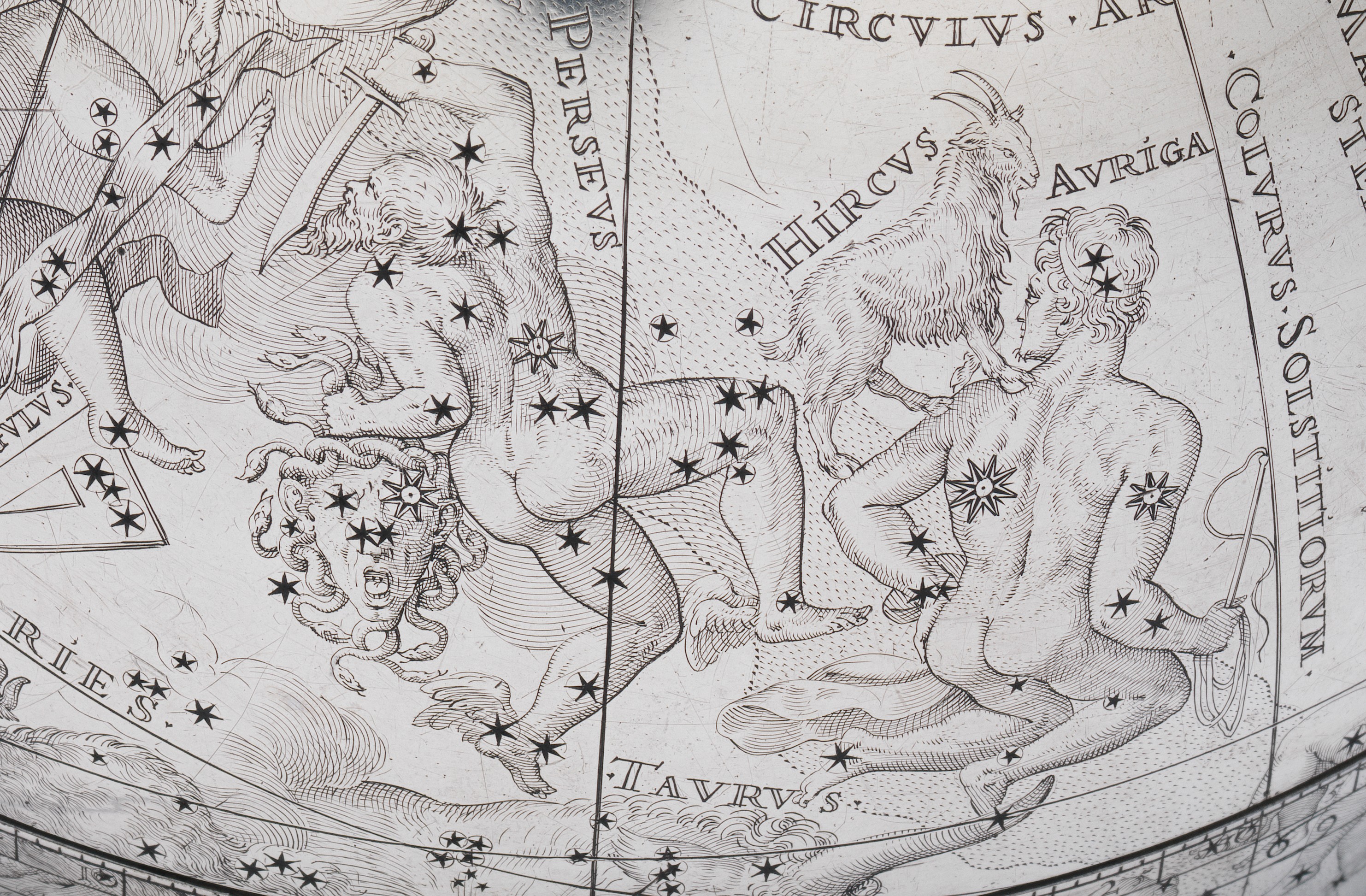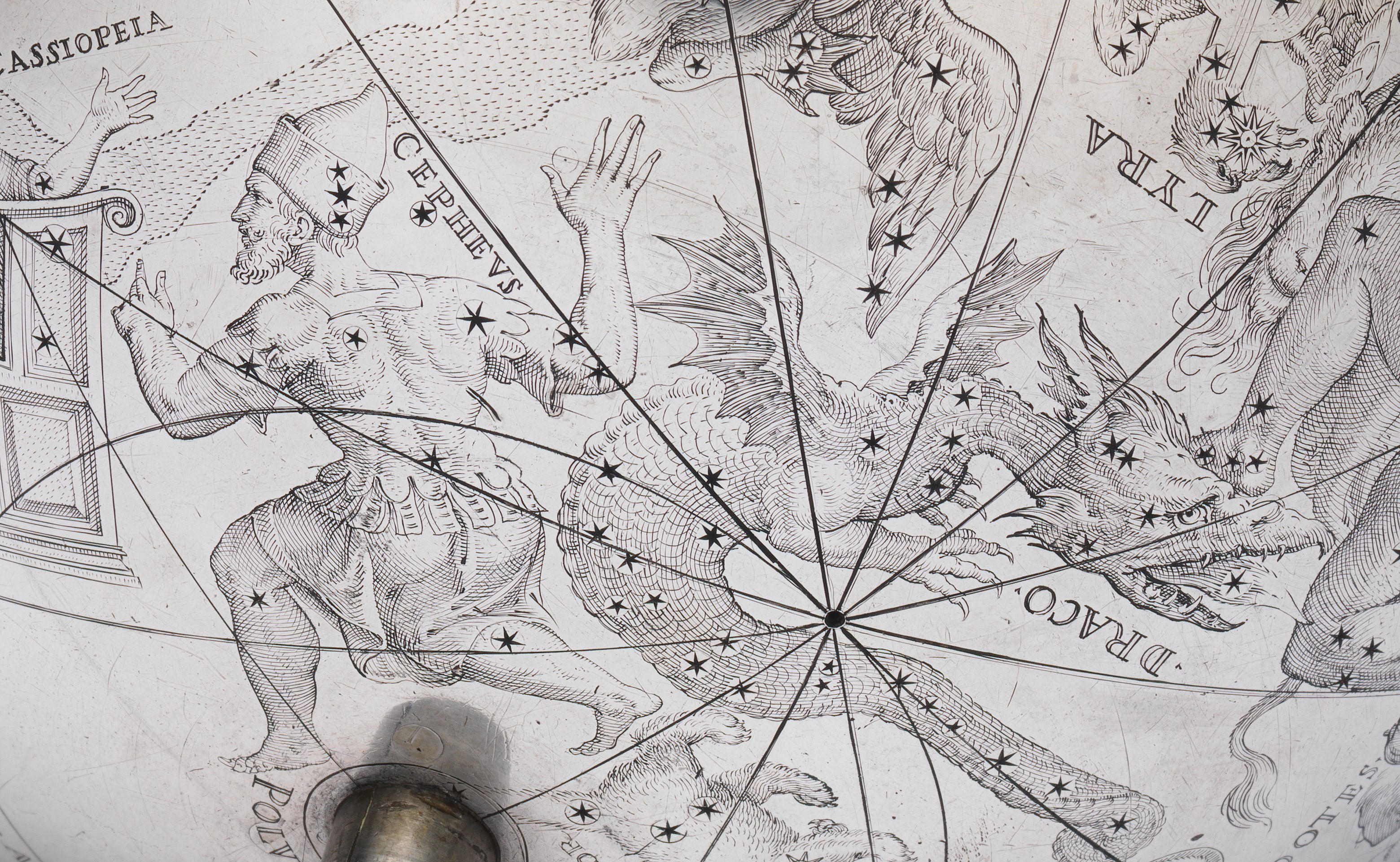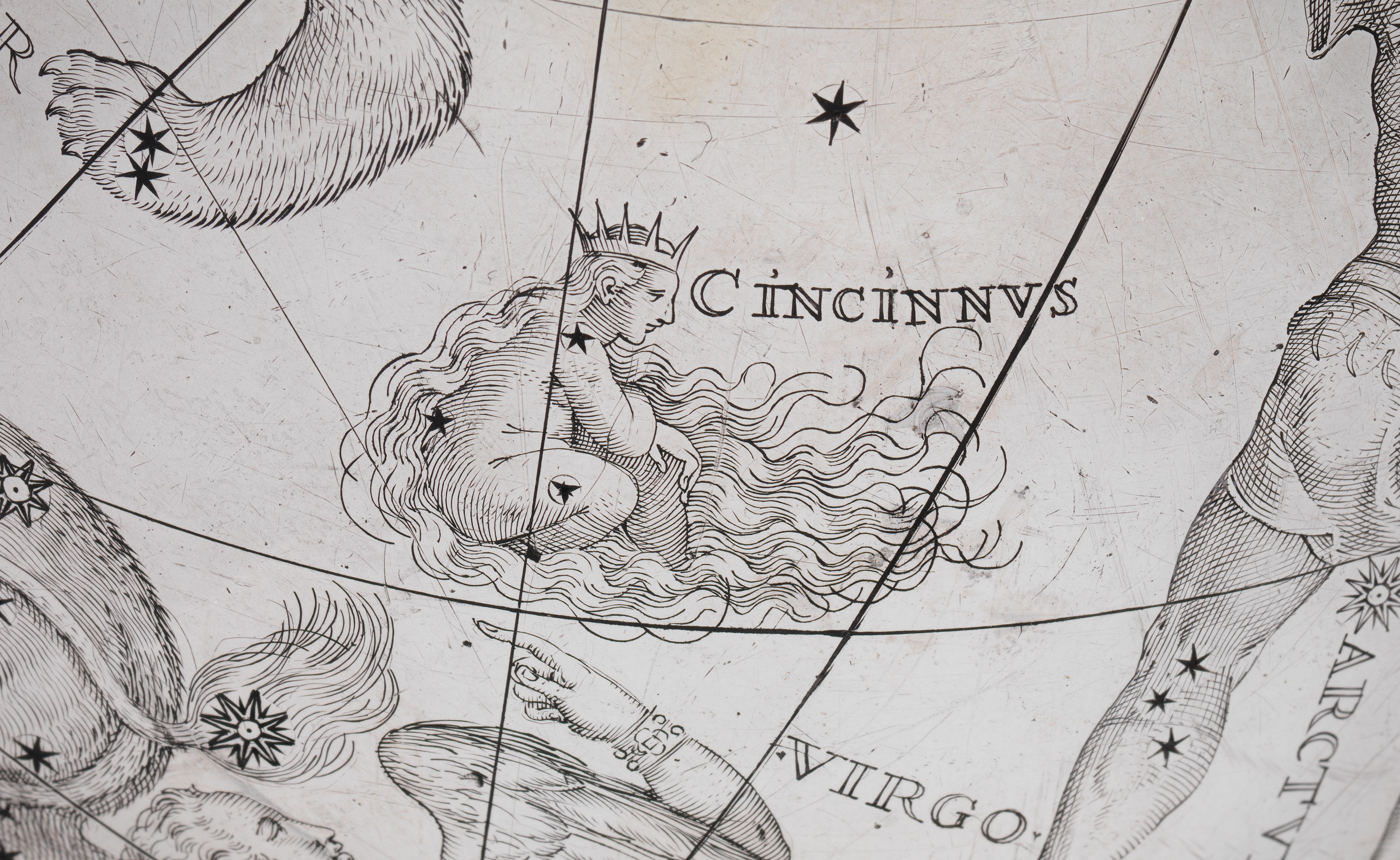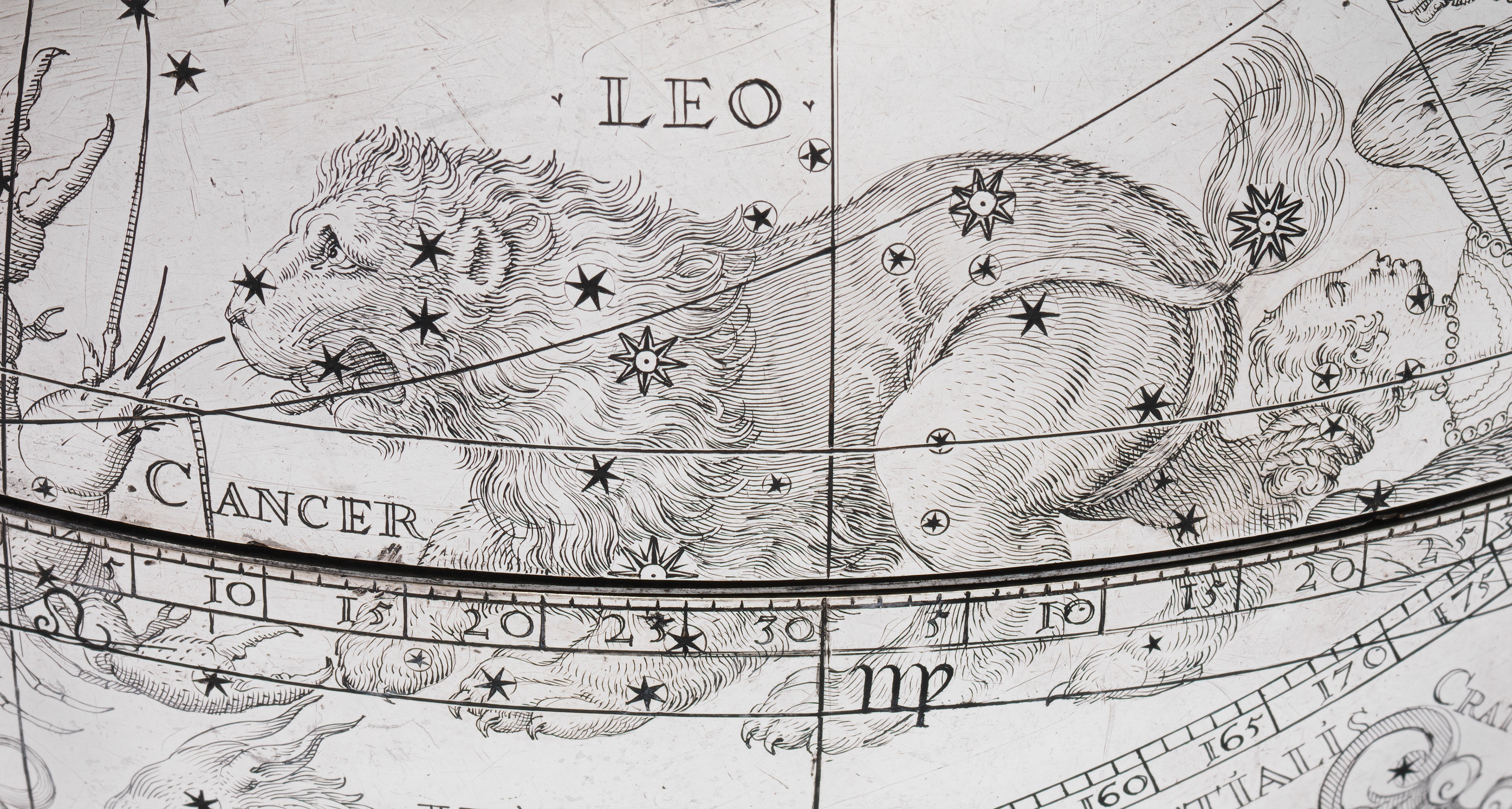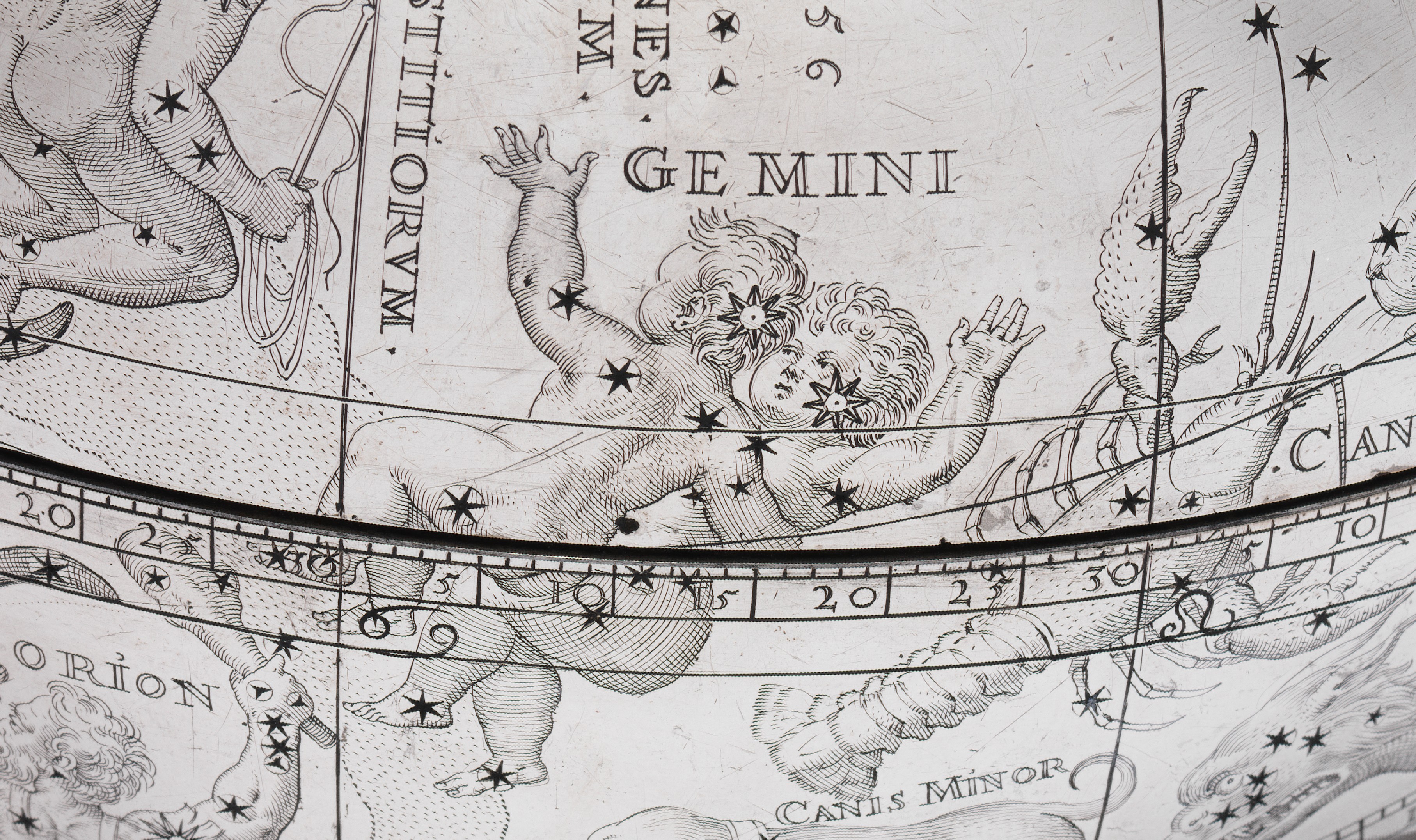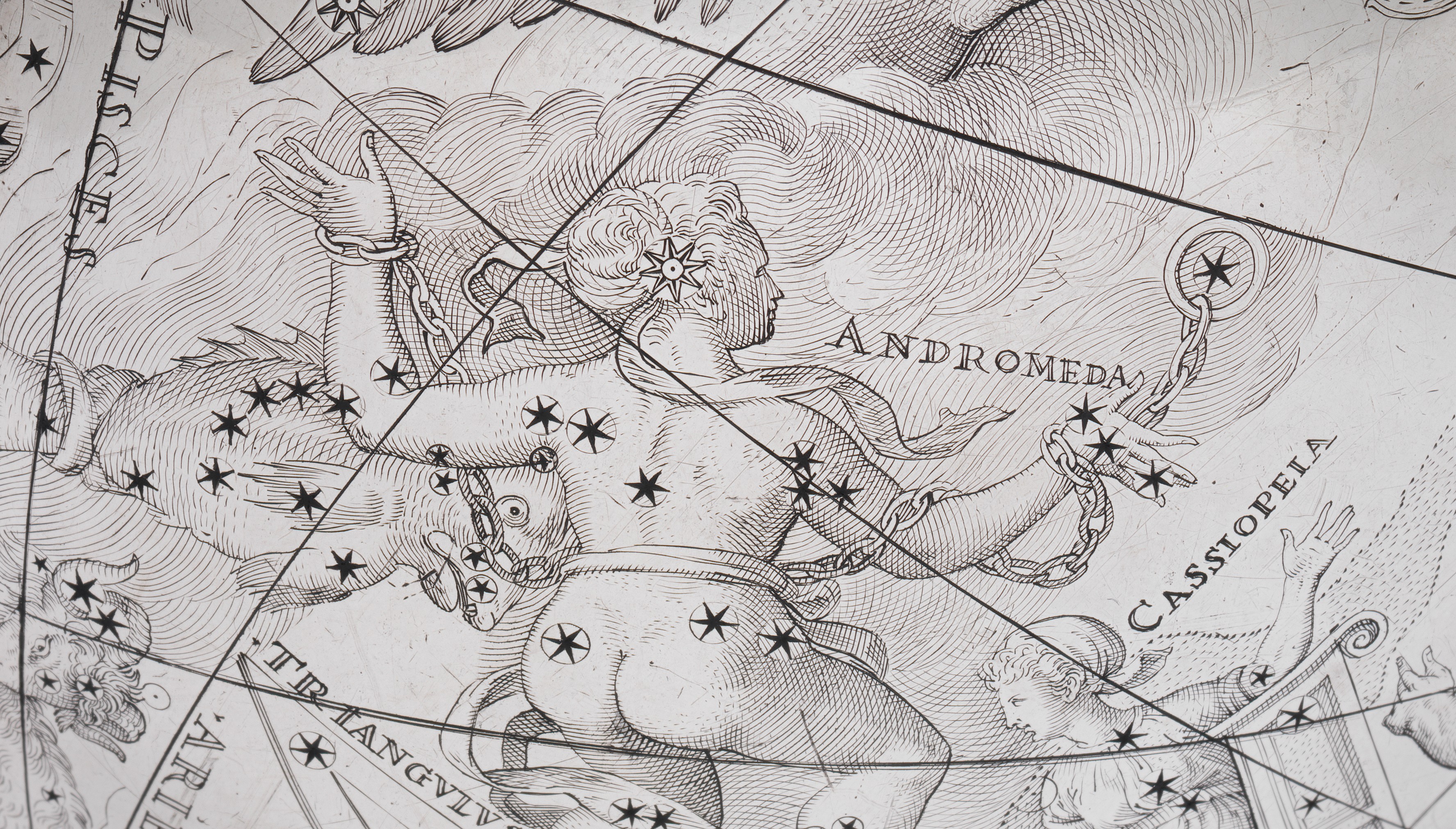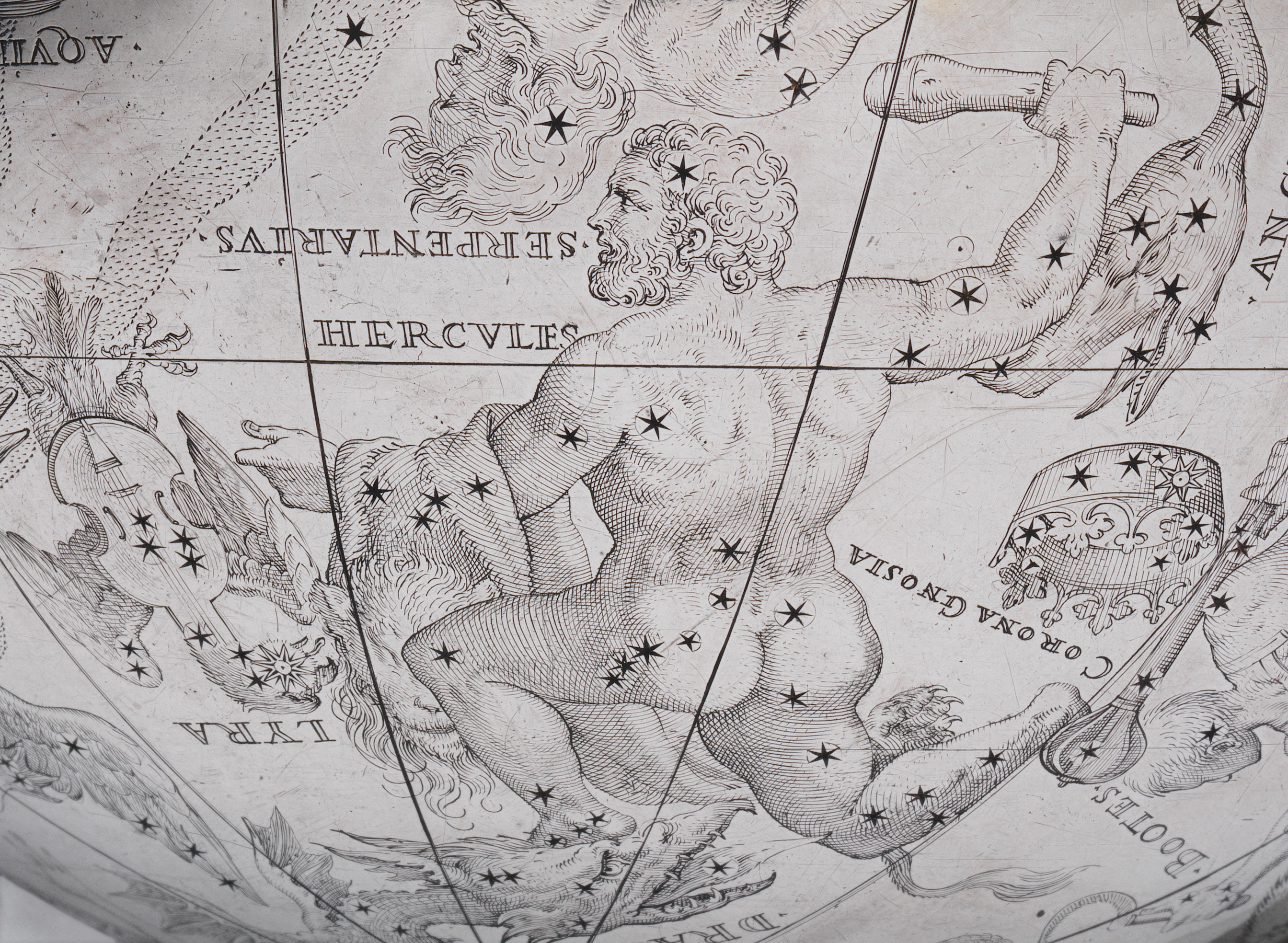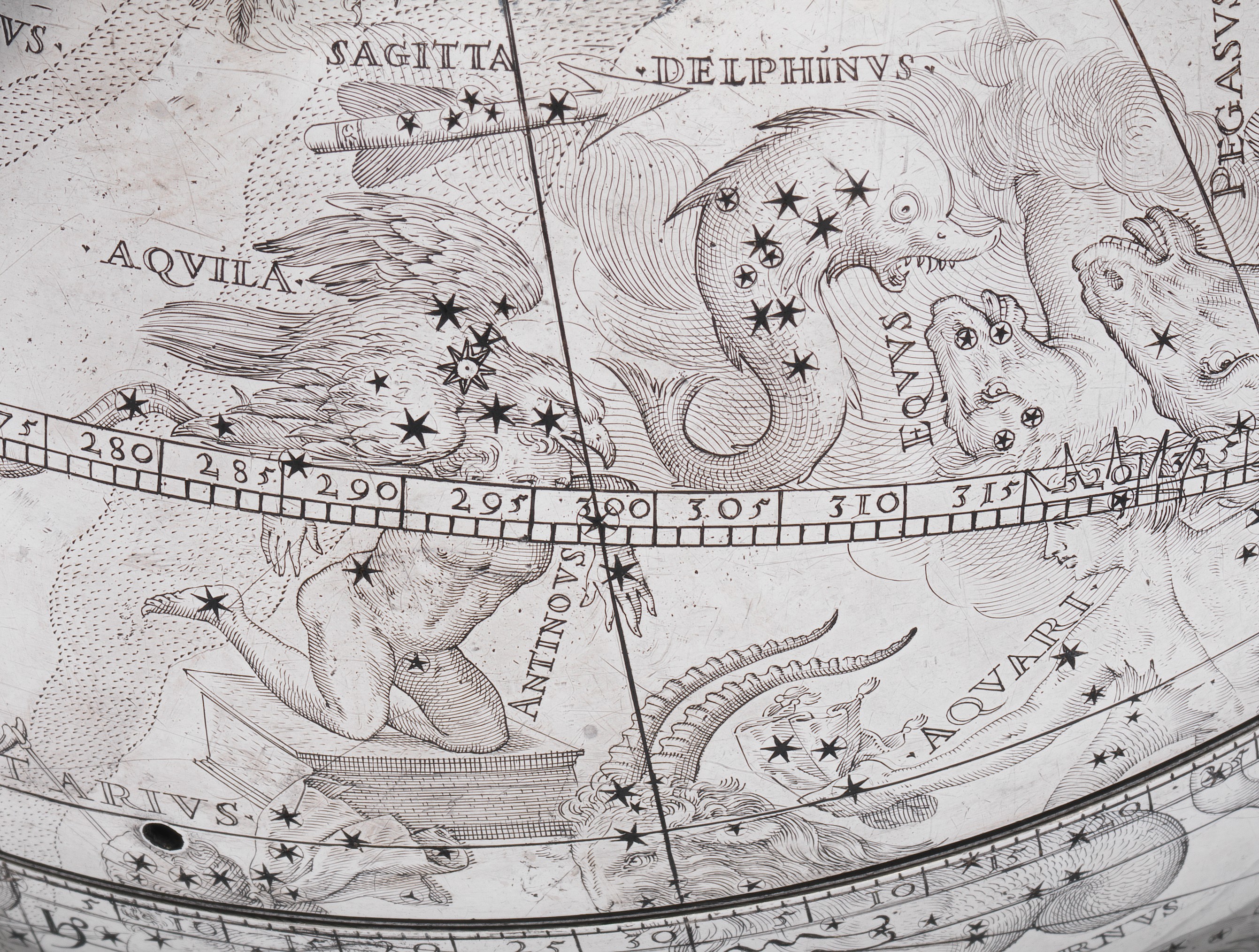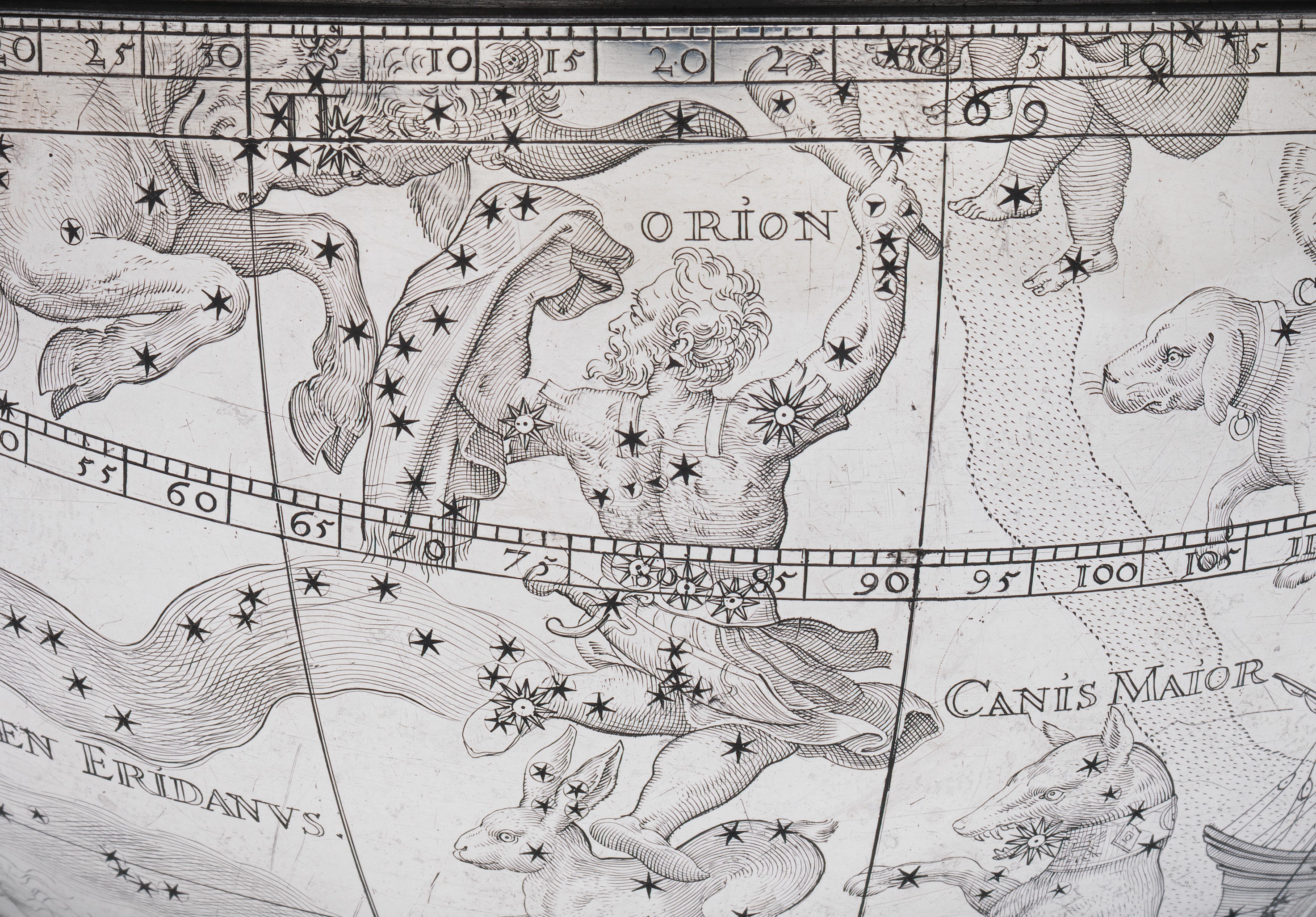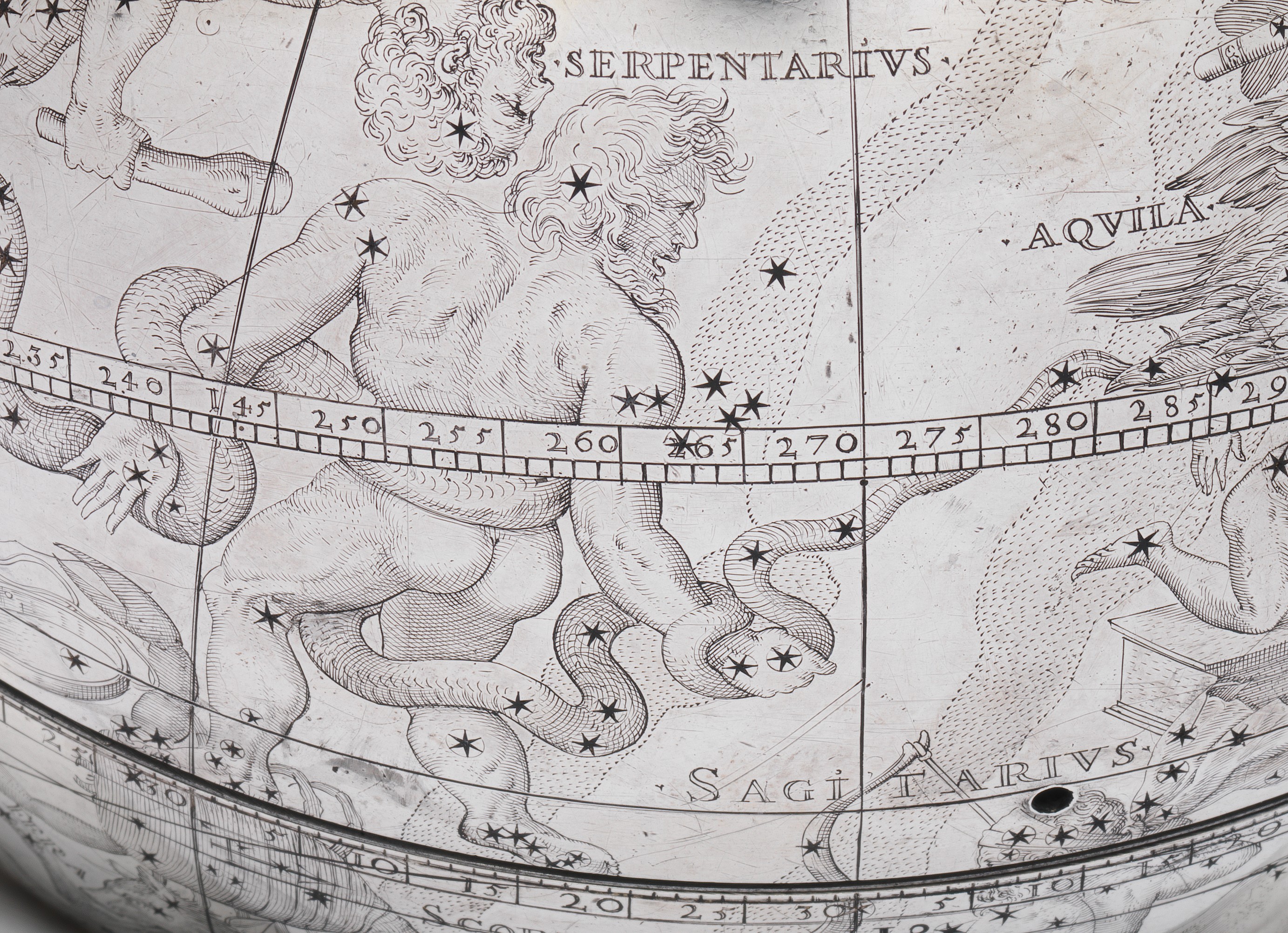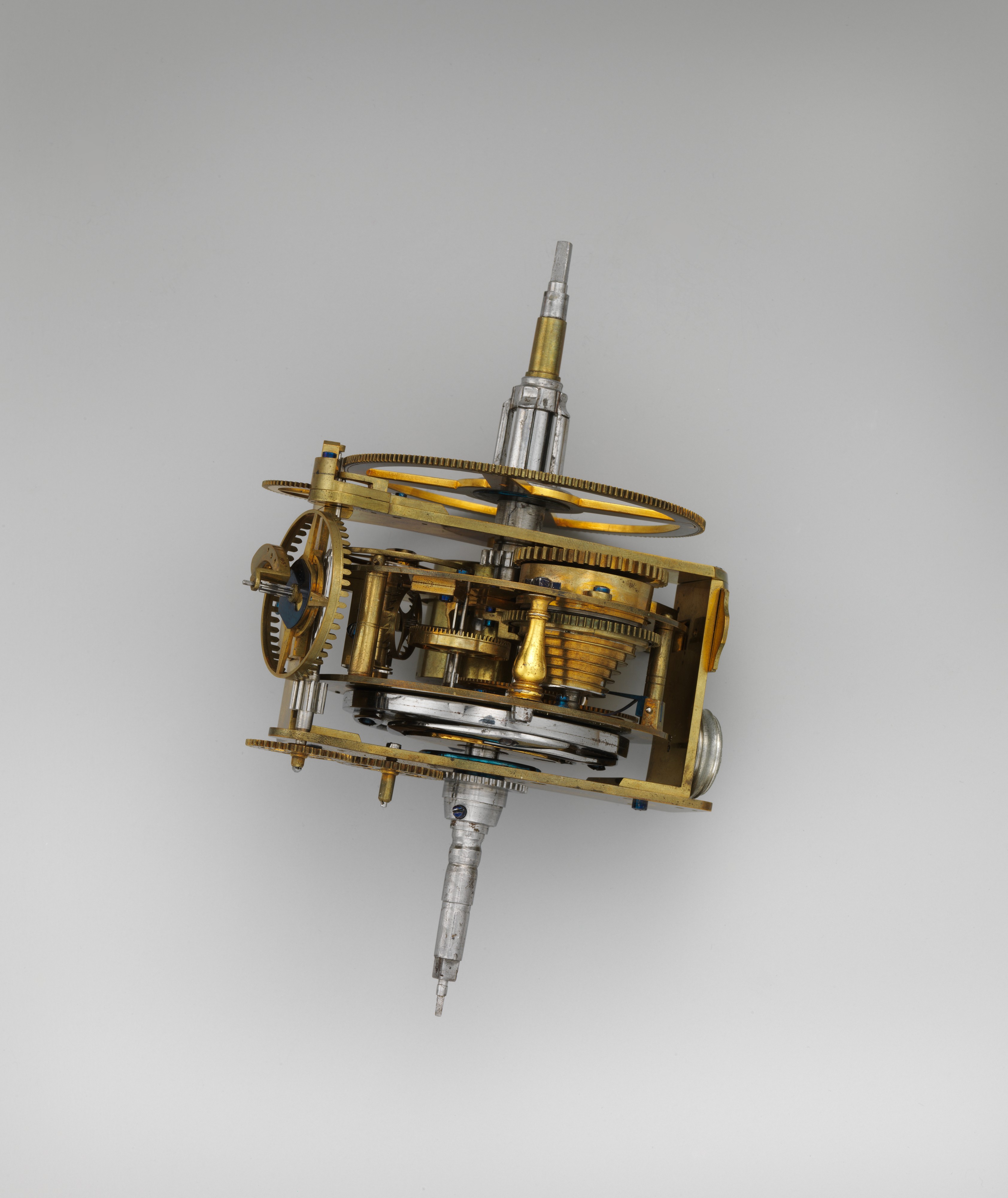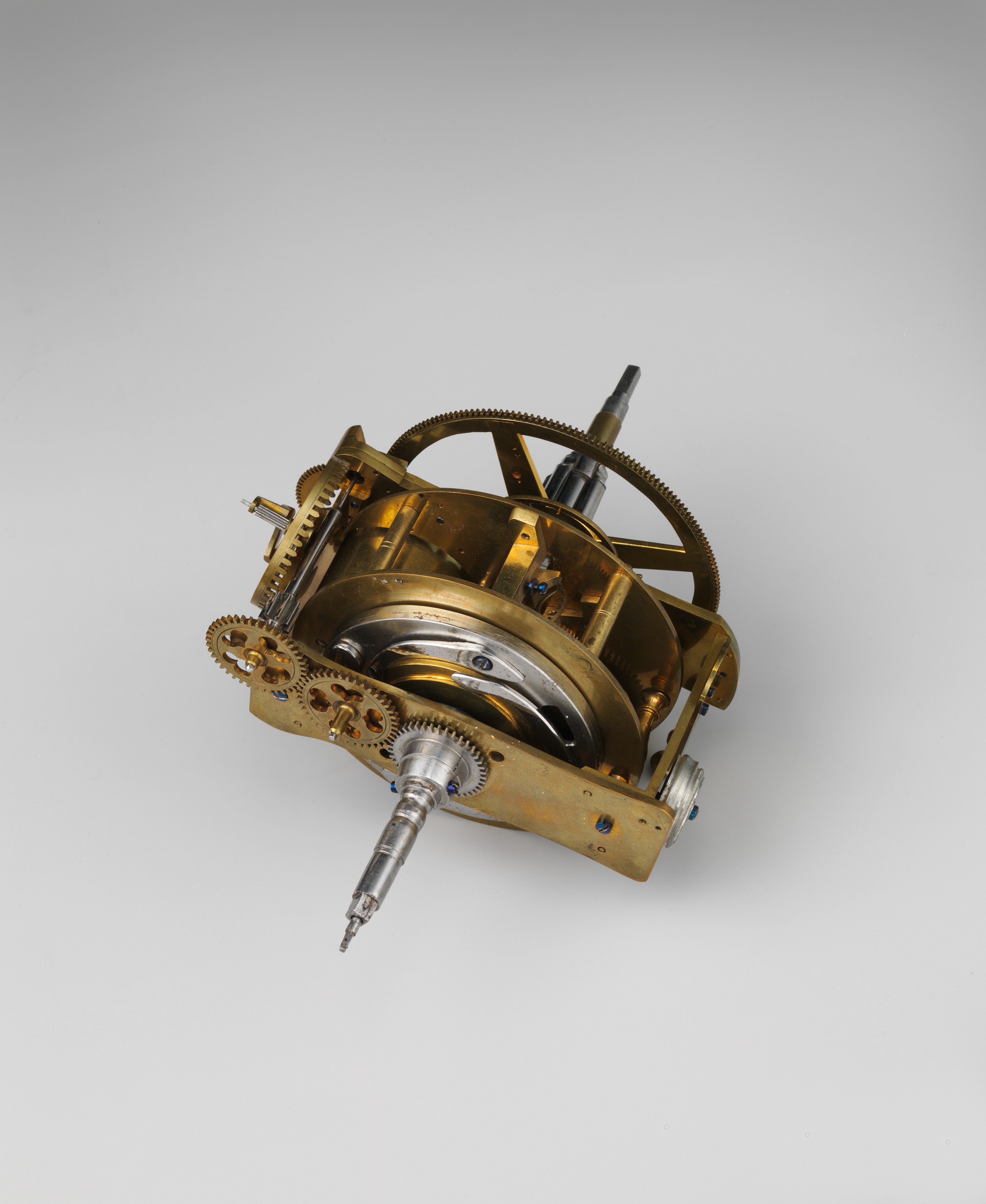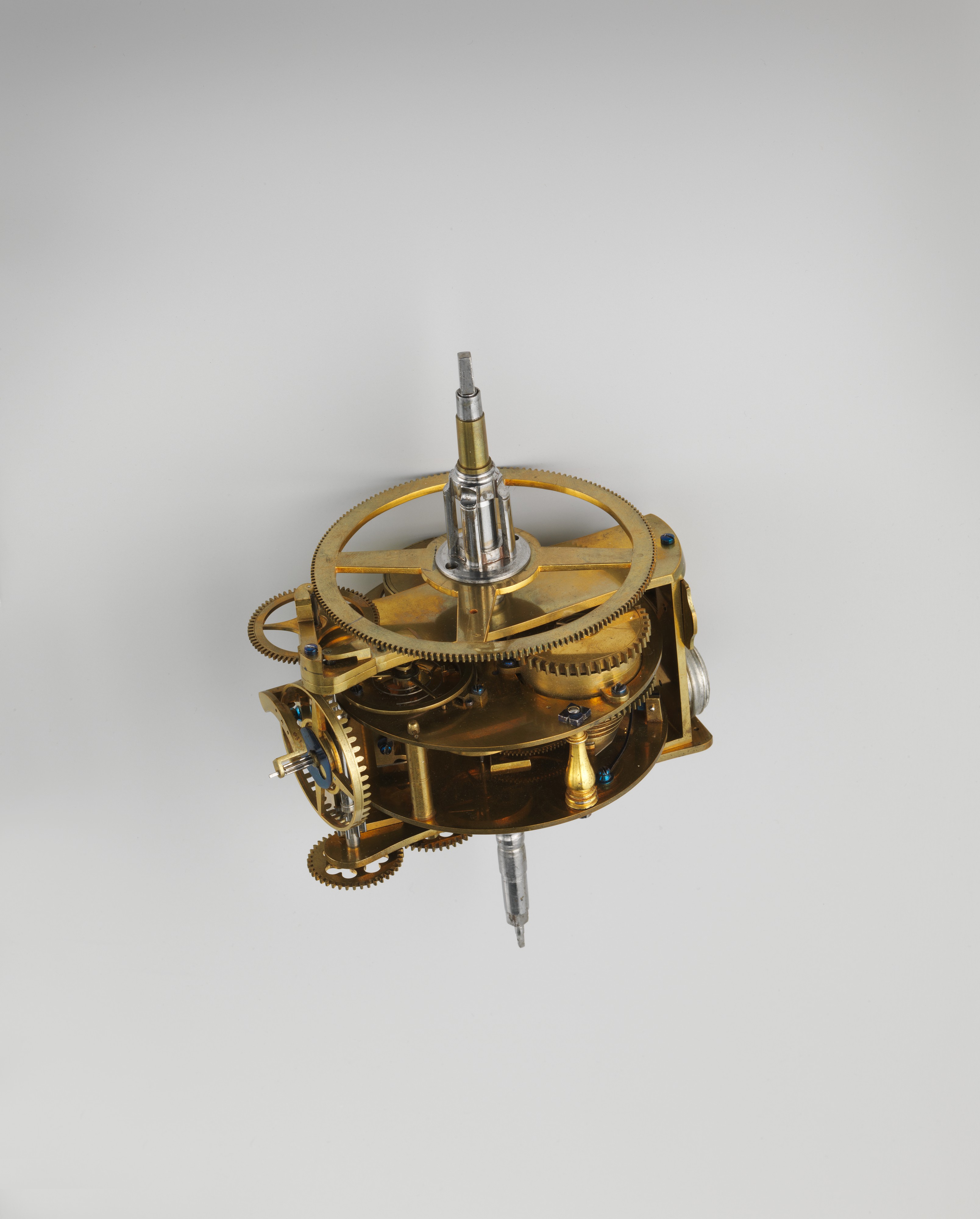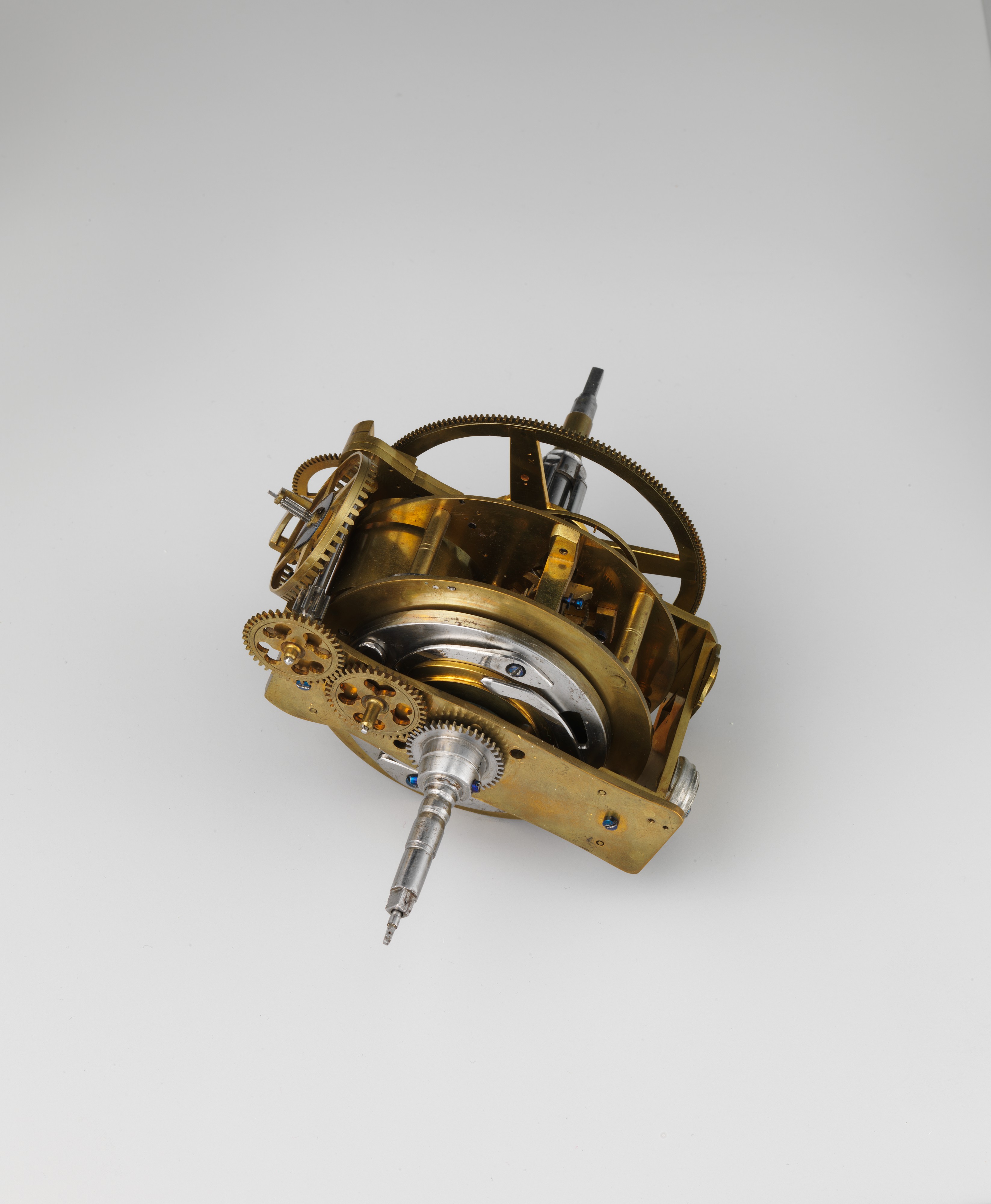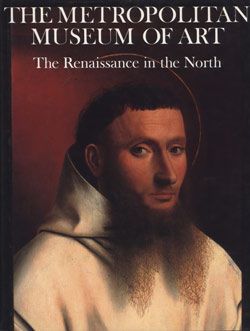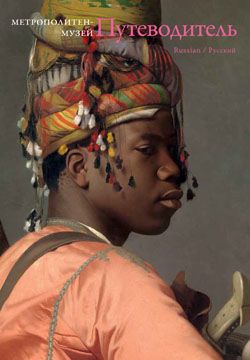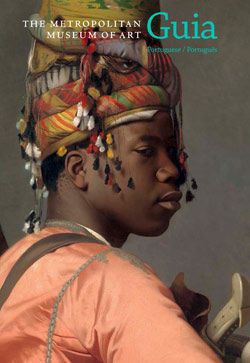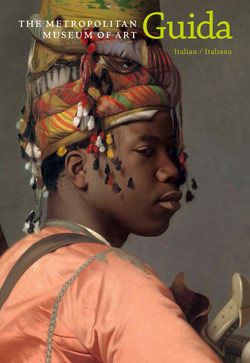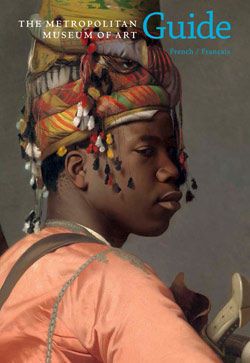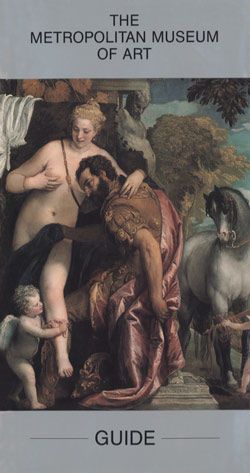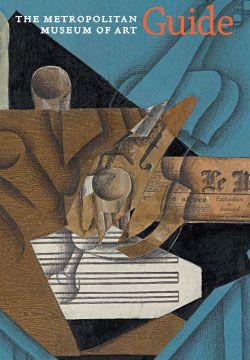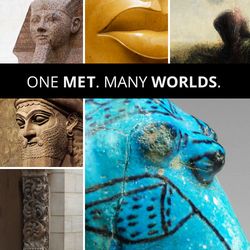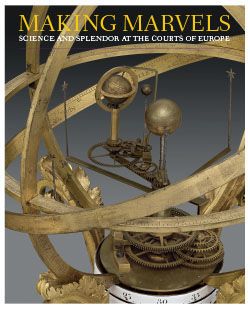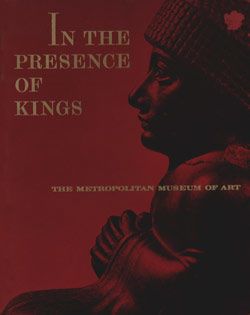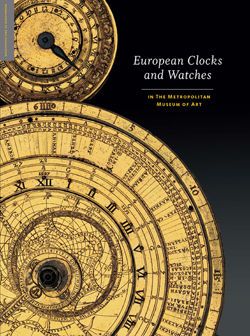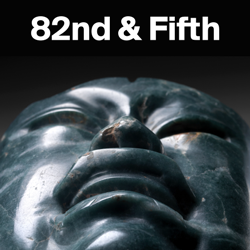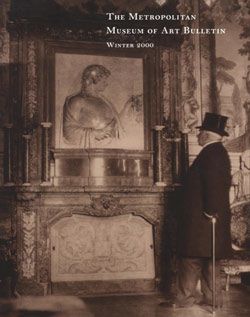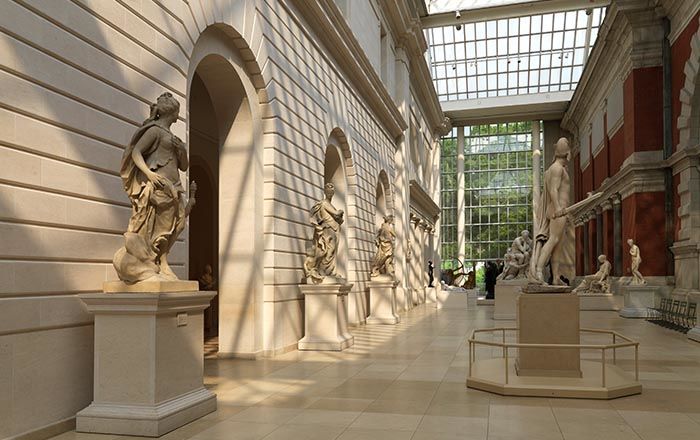Celestial globe with clockwork
Gerhard Emmoser German
Of the two types of globes, the terrestrial and the celestial, the celestial globe, which demonstrates the apparent motion of the heavens, is by far the more complex and challenging to produce. This richly ornamented clock is immediately recognizable as a Kunstkammer piece, an object that has become practically a symbol of itself. We know, in fact, that this globe supported by a figure of Pegasus formed part of the fabulous collection of the Holy Roman Emperor Rudolf II (1552–1612),[1] and it may have held a deeply personal meaning for him.
The silver globe is engraved with fifty-two constellations, including their names and their stars from the first through the sixth magnitudes. (The forms of the stars are differentiated according to their sizes or magnitudes.) The constellations consist of the forty-eight that are listed by the leading classical astronomer Claudius Ptolemy in his Almagest (ca. 150), plus Antinous and Cincinnus in the northern hemisphere and Arsinoë in the southern hemisphere.[2] The meridian ring is calibrated in one-degree divisions, and they are numbered (5–90 degrees) from both the equator to the poles and from the poles to the equator; the quadrants of the horizon ring are similarly divided and numbered. The semicircular ring is attached at right angles to the meridian ring and divided and numbered (7–12) for determining the astrological houses.
The sphere divides along the ecliptic line and encloses a circular-plated brass movement that rotates the sphere once every sidereal day, while moving a sun image along its yearly path through the ecliptic. The hour, expressed in mean solar time, is indicated on a dial attached to the meridian ring at the top of the polar axis of the sphere, and the day of the year is indicated on a calendar that rotates within the instrument’s horizon ring. The spring-driven movement is fixed on the plane of the polar axis but has been extensively repaired and renewed. The movement drove a revolving cage with attached gearing that originally propelled both the sphere and the sun. (The connection between the cage and the sphere with its sun is now missing.) The revolving cage seems to have been the original contribution of clockmaker Gerhard Emmoser (active 1556–84) to the technology of clockworkdriven globes.[3]
In 1566 Emmoser was appointed clockmaker to the Holy Roman Emperor Maximilian II (1527–1576), and subsequently reappointed by Maximilian’s son and successor Rudolf II, thereby keeping the title until his death in 1584. Nothing definite is known of Emmoser before 1556, at which time Prince Ottheinrich of Pfalz-Neuburg (1502–1559) sent him to Tübingen, Germany, to help carry out the ambitious ideas that mathematician Philip Imser (active 1531–62, died probably 1570) had proposed in regard to the construction of a planetary clock surmounted by a clockwork-driven celestial sphere.[4] This remarkable clock survives in the collection of the Technisches Museum für Industrie und Gewerbe, Vienna. Unfortunately, Prince Ottheinrich died before the clock was completed, and it was ultimately sold to Emperor Ferdinand I (1503–1564), who installed Emmoser the clockmaker in the imperial city of Augsburg in 1563, then a major center for European clockmaking. Before Emmoser could finish the masterpiece clock, which was one of the requirements for admission to the Augsburg guild, Emperor Ferdinand died, and his successor, Maximilian II, called the clockmaker back to Vienna.[5]
Emmoser was thus imperial clockmaker when Landgraf Wilhelm IV of Hessen-Kassel (1532–1592) sent his clockmaker, Hans Bucher, to the imperial court with a gift for the emperor of a clockwork-driven celestial globe, which was designed by Eberhard Baldewein (ca. 1525–1593) and completed by Bucher in 1574. This globe has been identified with another globe, now greatly altered, formerly in the Kunsthistorisches Museum, Vienna, and it has been convincingly demonstrated that Emmoser’s globe, although made in the imperial workshop, is, in fact, similar in so many ways that it must be considered part of the line of clockwork-driven globes that were developed at Kassel in conjunction with the astronomical activities at the Landgraf’s observatory.[6]
No record of the commission for the globe has been found, but it has been identified from a description recorded in the inventory of the Prague Kunstkammer of Emperor Rudolf II from 1607 to 1611.[7] By 1652, the globe was in the collection of Queen Christina of Sweden.[8] More than a century later, on April 20, 1770, it reappeared in Paris for the sale of the collection of Avocat Fortier, conseiller du Roi.[9] An inscription inside the globe dated May 15, 1781, states that a clockmaker, Gautrin (probably Pierre-Laurent Gautrin [died 1823]), repaired the globe in 1767 for a Monsieur Delacronière, conseiller en la cour des aydes de Paris. It was probably Gautrin who made most of the changes to the movement and to the exterior of the globe.
Both the goldsmith who made the extraordinary figure of the winged horse and the engraver of the constellations, whose difficult and exacting work was so precisely executed, remain anonymous. Here it is Pegasus, the winged horse of of classical mythology, who supports the celestial sphere rather than the usual demigod Atlas. After many years of speculation, it is now possible to trace the symbolism of the globe to Renaissance Neoplatonism, specifically to the preface to Arithmetic (1536) by the German reformer Philip Melanchthon (1497–1560). A key figure in the Lutheran Reformation and rector for the University of Wittenberg, Germany, Melanchthon proposed that “Those who busy themselves with studies and strive for complete knowledge should see clearly that there is no access to the science of celestial things except through arithmetic and geometry.”[10] Based on a metaphor in Plato’s Phaedrus (360 B.C.), Melanchthon’s text elaborated on the idea that
the wings of the human mind are arithmetic and geometry. . . . Carried up to heaven by their help, you will be able to traverse with your eyes the entire nature of things, discern the intervals and boundaries of the greatest bodies, see the fateful meetings of the stars, and then understand the causes of the greatest things that happen in the life of man. . . . For I know that you are certainly convinced that the science of celestial things has great dignity and usefulness.[11]
The idea that celestial things (i.e., the science of astronomy) must be supported on the wings of arithmetic and geometry was current at the imperial court, as documented by surviving comments of two court mathematicians, both appointed by Rudolf II: Nicolaus Raimarus Ursus (1551–1600) and Johannes Kepler (1571–1630).[12] Thus, the use of Pegasus, a creature from classical mythology, to render an abstraction concrete suggests that the globe was intended as a beautiful, perhaps even poetic, way of representing the metaphor.[13]
Notes (For key to shortened references see bibliography in Vincent and Leopold, European Clocks and Watches in the Metropolitan Museum of Art. NY: The Metropolitan Museum of Art, 2015)
[1] See Prag um 1600 1988; Rudolf II and Prague 1997.
[2] Rosenfeld 1980, pp. 181–89.
[3] See Leopold 1986, pp. 107–11, for an extended analysis of the movement.
[4] See Chandler and Vincent 1980.
[5] For a more extensive account of what is known about Emmoser, see ibid., pp. 111–13.
[6] Leopold 1986, pp. 88–92; see also Vincent and Chandler 1989–90, p. 181, and p. 178, fig. 141.
[7] Neumann 1966, pp. 264–65, n. 12; see also Bauer and Haupt 1976, p. 111, fol. 339v, no. 2158.
[8] Christina 1966, p. 495, no. 1225, and pl. 85.
[9] The authors are indebted to the late Jean-Neree Ronfort for this information as well as for the identification of the globe in the sale of the collection of a Monsieur Daugny at the Hotel des Commissaires-Priseurs, Paris, on Mar. 8, 1858. See Hotel Drouot 1858, p. 17, no. 62.
[10] Melanchthon 1999, p. 92. For the discovery by Volker R. Remmert of the preface to Melanchthon’s Arithmetic as read at the University of Wittenberg in 1536 by Georg Joachim Rheticus (1514–1574), see Remmert 2009.
[11] Melanchthon 1999, pp. 93–94.
[12] Rosen 1986, pp. 30–44.
[13] For further discussion of the globe and its meaning, see Vincent and Chandler 2011–12.
This image cannot be enlarged, viewed at full screen, or downloaded.
This artwork is meant to be viewed from right to left. Scroll left to view more.



